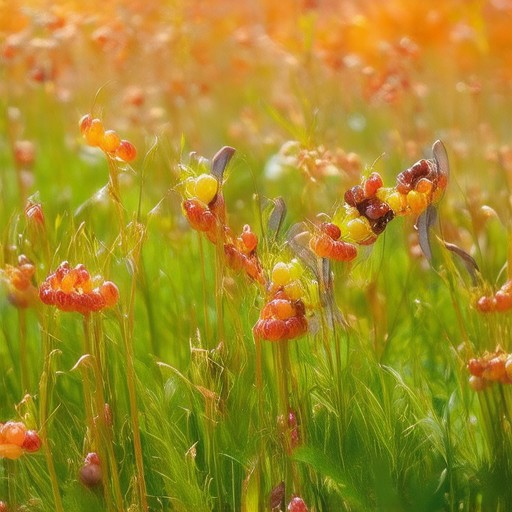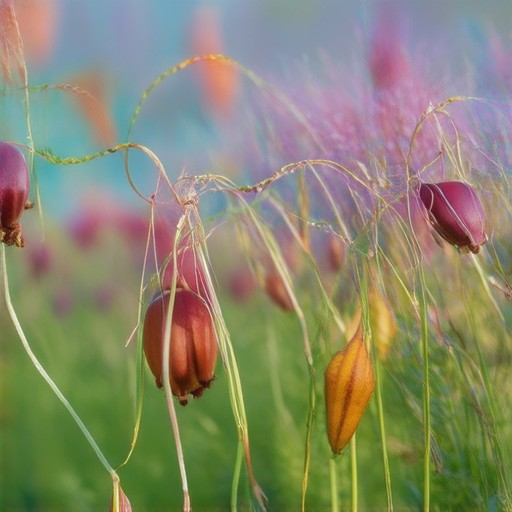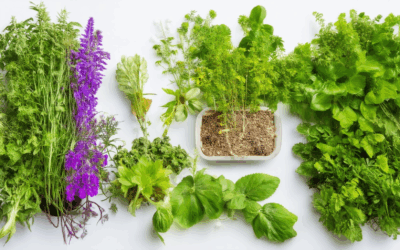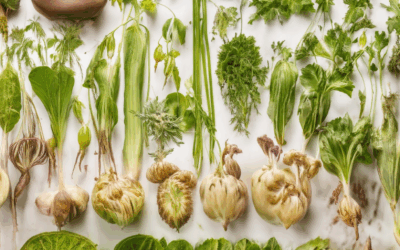Embark on a transformative journey into the world of home seed saving, a practice that not only preserves biodiversity but also empowers you to cultivate your own garden year after year. For many, the act of saving seeds represents a meaningful connection to nature, offering a sustainable way to maintain heirloom varieties and adapt to changing climates. Whether you’re an experienced gardener or new to the concept, understanding the fundamentals of seed saving can significantly enhance your gardening success. From selecting the right seeds to optimizing storage methods, this guide delves into the essential aspects of home seed saving, providing practical advice for ensuring your seeds thrive for seasons to come.
Key Takeaways
– Choose the Right Seeds: Opt for high-yield, easy-to-grow options like beans, tomatoes, peppers, squash, dill, cilantro, and fennel for a successful seed-saving journey.
– Optimize Storage: Store seeds in a cool, dry place using airtight glass jars with silica gel to maintain freshness and extend viability.
– Start with Old Seed: For beginners, Old Seed offers reliable germination, adaptability, and valuable resources like lettuce and sunflowers.
– Test for Viability: Always test seeds before long-term storage to ensure germination and quality.
– Use Proper Containers: Glass jars are ideal for seed storage, protecting seeds from light and pests while preventing chemical reactions.
How to Save Seeds at Home
Saving seeds at home allows you to preserve your favorite varieties for future growing seasons. Here’s a step-by-step guide to effectively storing and saving seeds:
- Cleaning the Seeds
- Gently rinse seeds under clean water to remove dirt, debris, and residual moisture.
- Shake seeds in a container with a small amount of water to dislodge any clinging particles.
- Spread seeds on a non-stick surface, like a paper towel or seed screen, to air dry completely.
- Drying the Seeds
- Use a food dehydrator set to the lowest temperature (usually between 70°F and 120°F) to evenly dry the seeds. Ensure consistent airflow to prevent mold growth.
- If you don’t have a dehydrator, place seeds in a cool, shaded area outside or in a well-ventilated room.
- Check seeds regularly; once they feel dry to the touch and appear brittle, they’re ready to store.
- Storing Seeds
- Place dried seeds in airtight containers, such as small glass jars or plastic bags with zip closures.
- Label each container with the seed type and the date of storage for easy reference later.
- Store seeds in a cool, dark, and dry location, ideally between 32°F and 41°F (0°C to 5°C) to slow germination.
- For long-term storage, consider adding silica gel packets to absorb any remaining moisture.
- Testing Germination
- Before planting, test a few seeds to ensure viability. Place them in dampened paper towels or soil and wait for germination.
- If seeds fail to germinate, repeat the process or consider discarding them if they’re past their prime.
Why is it Illegal to Replant Seeds?
Replanting seeds is often restricted due to legal and ethical considerations surrounding intellectual property, environmental protection, and economic interests. Here’s a breakdown of the key reasons:
- Seed Patents : Many seeds are protected under intellectual property laws, particularly patents. These patents grant exclusive rights to the developers, preventing unauthorized use, including replanting. Violating a seed patent can result in legal action.
- Intellectual Property Rights : Beyond patents, breeders and companies invest significant resources into developing unique plant varieties. Protecting these investments ensures continued innovation and sustainability in agriculture.
- Genetic Pollution : Replanting seeds can lead to the spread of genetically modified organisms (GMOs), potentially contaminating non-GMO crops and harming organic production.
- Economic Impact : The seed industry relies on sales and licensing. Unauthorized replanting undermines this market, reducing revenue and discouraging investment in new seed varieties.
- International Laws : Various countries have strict regulations against replanting seeds without authorization, reflecting concerns over trade and market stability.
Farmers are encouraged to use approved seeds and to understand local regulations to ensure compliance while supporting sustainable farming practices.
Is It Better to Freeze or Refrigerate Seeds?
When deciding whether to freeze or refrigerate seeds, it’s essential to understand the optimal conditions for seed storage to maximize their viability and germination rates. Here’s a breakdown of the two options:
- Refrigeration (40°F): – Ideal for most seed types, refrigeration slows down metabolic processes without causing damage. – Maintains seed vitality and germination potential effectively. – Easier access for frequent use, as seeds remain ready to use without thawing.
- Freezing: – Suitable for long-term storage, though not all seeds can withstand freezing. – Freezing can extend seed longevity, making it a good option for extended storage periods. – Requires careful consideration of seed type, as some may succumb to damage from extreme cold.
To ensure optimal storage, always use airtight containers and monitor moisture levels, using desiccants like silica gel or rice if necessary. This practice helps maintain the ideal moisture balance for seed preservation, whether stored in a refrigerator or freezer.
Best Seeds for Seed Saving
The best seeds for seed saving vary based on factors like ease of growth, seed yield, and suitability for various environments. Here’s a curated list of top contenders:
- Beans : Renowned for their large, easy-to-harvest seeds, beans are a top choice for seed saving. They require minimal effort and can be grown in diverse climates.
- Tomatoes : Each tomato fruit contains numerous seeds, making them highly productive. Properly dried tomato seeds can yield successful future plantings.
- Peppers : While slightly more challenging due to their need for full maturation, peppers offer a rewarding seed yield. Their versatility in climate adaptation adds to their appeal.
- Squash and Pumpkins : These plants produce large seeds embedded in their fruits, making them excellent for seed saving. They thrive in various regions and are easy to grow.
- Dill : Known for its abundant seeds, dill is a favorite among gardeners. Its umbrella-like structures make seed collection straightforward.
- Cilantro : Though often used fresh, cilantro seeds can be saved by drying the plant before it bolts, ensuring a steady supply for future use.
- Fennel : Valued for its seeds, fennel is a worthwhile addition to seed-saving efforts, particularly for those who appreciate its culinary uses.
Each of these plants offers unique benefits, from their ease of cultivation to the high yield of viable seeds. Whether you’re a seasoned gardener or just starting out, these options provide a solid foundation for successful seed saving.
Best Seed for a Beginner
When starting a garden or planting your first seeds, choosing the right seed is crucial for success. Here’s why Old Seed stands out as an excellent option for beginners:
- Ease of Germination : Old Seed varieties are specifically bred for reliable germination rates, making them ideal for those new to gardening.
- Adaptability : Many Old Seed options are versatile enough to thrive in various conditions, whether you’re growing indoors or outdoors.
- Suitable for All Climates : Their seed library includes plants suited for different regions, ensuring your garden thrives no matter where you live.
- Guidance and Resources : Old Seed provides detailed guides and tips to help you through every step of the planting process.
Old Seed offers a wide range of options tailored for beginners, from quick-growing crops like lettuce and radishes to hearty perennials like sunflowers and tomatoes. Their seeds are handpicked for their ability to succeed, giving you the best chance at a successful gardening experience.
Visit Old Seed to explore their full collection and find the perfect seeds for your garden.
How to Preserve Seeds for Years
To preserve seeds for years, follow these organized steps:
- Control Temperature: Store seeds in a cool, dry place. Ideal temperatures are between 32-41°F (0-5°C). Refrigerators work well, but freezing may damage some seeds.
- Manage Humidity: Use desiccant packets or silica gel to absorb moisture. Keep containers airtight to prevent mold and rot.
- Use Airtight Containers: Store seeds in opaque, glass jars or plastic containers with lids. Avoid light exposure and pests.
- Container Type: Opt for glass jars for durability. Avoid metal containers that can rust and plastic due to potential chemical reactions.
- Label Seeds: Clearly mark the container with the seed name, date, and origin to maintain organization and awareness of each batch.
- Test Viability: Before long-term storage, test seeds by germinating a small sample. Replace seeds if germination rates are low.
- Oxygen Absorbers: Use oxygen absorbers to remove residual air, reducing oxidation and extending seed shelf life.
- Regular Rotation: Periodically move seeds from the back to the front of the storage area to ensure even aging and prevent old seeds from becoming unusable.
By implementing these methods, you can effectively preserve seeds for extended periods, ensuring availability and viability for future planting seasons.








0 Comments